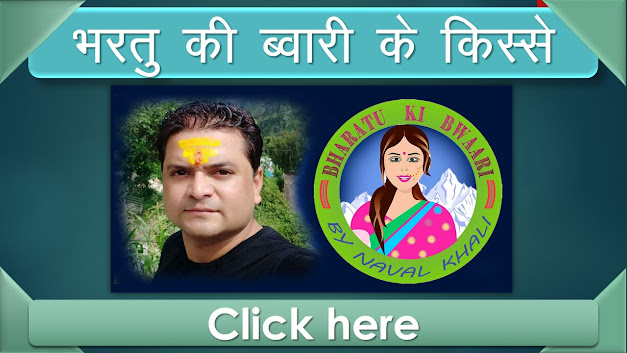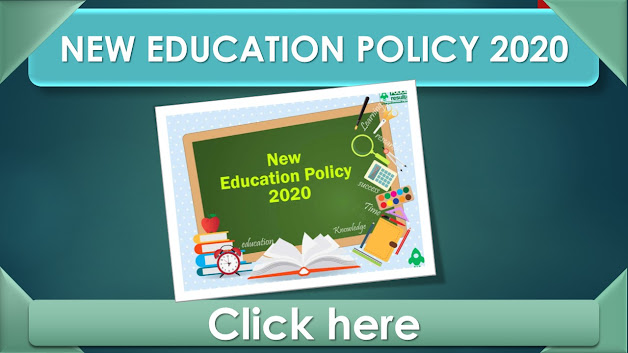12. Optimal Learning Environments and Support for Students
12.1. Effective learning requires a comprehensive approach that involves appropriate curriculum, engaging pedagogy, continuous formative assessment, and adequate student support. The curriculum must be interesting and relevant, and updated regularly to align with the latest knowledge requirements and to meet specified learning outcomes. High-quality pedagogy is then necessary to successfully impart the curricular material to students; pedagogical practices determine the learning experiences that are provided to students, thus directly influencing learning outcomes. The assessment methods must be scientific, designed to continuously improve learning and test the application of knowledge. Last but not least, the development of capacities that promote student wellness such as fitness, good health, psycho-social well-being, and sound ethical grounding are also critical for high-quality learning.
Thus, curriculum, pedagogy, continuous assessment, and student support are the cornerstones for quality learning. Along with providing suitable resources and infrastructure, such as quality libraries, classrooms, labs, technology, sports/recreation areas, student discussion spaces, and dining areas, a number of initiatives will be required to ensure that learning environments are engaging and supportive, and enable all students to succeed.
12.2. First, in order to promote creativity, institutions and faculty will have the autonomy to innovate on matters of curriculum, pedagogy, and assessment within a broad framework of higher education qualifications that ensures consistency across institutions and programmes and across the ODL, online, and traditional ‘in-class’ modes. Accordingly, curriculum and pedagogy will be designed by institutions and motivated faculty to ensure a stimulating and engaging learning experience for all students, and continuous formative assessment will be used to further the goals of each programme. All assessment systems shall also be decided by the HEI, including those that lead to final certification. The Choice Based Credit System (CBCS) will be revised for instilling innovation and flexibility. HEIs shall move to a criterion-based grading system that assesses student achievement based on the learning goals for each programme, making the system fairer and outcomes more comparable. HEIs shall also move away from high-stakes examinations towards more continuous and comprehensive evaluation.
12.3. Second, each institution will integrate its academic plans ranging from curricular improvement to quality of classroom transaction - into its larger Institutional Development Plan (IDP). Each institution will be committed to the holistic development of students and create strong internal systems for supporting diverse student cohorts in academic and social domains both inside and outside formal academic interactions in the classroom. For example, all HEIs will have mechanisms and opportunities for funding of topic-centred clubs and activities organized by students with the help of faculty and other experts as needed, such as clubs and events dedicated to science, mathematics, poetry, language, literature, debate, music, sports, etc. Over time, such activities could be incorporated into the curriculum once appropriate faculty expertise and campus student demand is developed. Faculty will have the capacity and training to be able to approach students not just as teachers, but also as mentors and guides.
12.4. Third, students from socio-economically disadvantaged backgrounds require encouragement and support to make a successful transition to higher education. Universities and colleges will thus be required to set up high-quality support centres and will be given adequate funds and academic resources to carry this out effectively. There will also be professional academic and career counselling available to all students, as well as counsellors to ensure physical, psychological and emotional well-being.
12.5. Fourth, ODL and online education provide a natural path to increase access to quality higher education. In order to leverage its potential completely, ODL will be renewed through concerted, evidence-based efforts towards expansion while ensuring adherence to clearly articulated standards of quality. ODL programmes will aim to be equivalent to the highest quality in-class programmes available. Norms, standards, and guidelines for systemic development, regulation, and accreditation of ODL will be prepared, and a framework for quality of ODL that will be recommendatory for all HEIs will be developed.
12.6. Finally, all programmes, courses, curricula, and pedagogy across subjects, including those in-class, online, and in ODL modes as well as student support will aim to achieve global standards of quality.
Internationalization
12.7. The various initiatives mentioned above will also help in having larger numbers of international students studying in India, and provide greater mobility to students in India who may wish to visit, study at, transfer credits to, or carry out research at institutions abroad, and vice versa. Courses and programmes in subjects, such as Indology, Indian languages, AYUSH systems of medicine, yoga, arts, music, history, culture, and modern India, internationally relevant curricula in the sciences, social sciences, and beyond, meaningful opportunities for social engagement, quality residential facilities and on-campus support, etc. will be fostered to attain this goal of global quality standards, attract greater numbers of international students, and achieve the goal of ‘internationalization at home’.
12.8. India will be promoted as a global study destination providing premium education at affordable costs thereby helping to restore its role as a Vishwa Guru. An International Students Office at each HEI hosting foreign students will be set up to coordinate all matters relating to welcoming and supporting students arriving from abroad. Research/teaching collaborations and faculty/student exchanges with high-quality foreign institutions will be facilitated, and relevant mutually beneficial MOUs with foreign countries will be signed. High performing Indian universities will be encouraged to set up campuses in other countries, and similarly, selected universities e.g., those from among the top 100 universities in the world will be facilitated to operate in India. A legislative framework facilitating such entry will be put in place, and such universities will be given special dispensation regarding regulatory, governance, and content norms on par with other autonomous institutions of India. Furthermore, research collaboration and student exchanges between Indian institutions and global institutions will be promoted through special efforts. Credits acquired in foreign universities will be permitted, where appropriate as per the requirements of each HEI, to be counted for the award of a degree.
Student Activity and Participation
12.9. Students are the prime stakeholders in the education system. Vibrant campus life is essential for high-quality teaching-learning processes. Towards this end, students will be given plenty of opportunities for participation in sports, culture/arts clubs, eco-clubs, activity clubs, community service projects, etc. In every education institution, there shall be counselling systems for handling stress and emotional adjustments. Furthermore, a systematized arrangement shall be created to provide the requisite support to students from rural backgrounds, including increasing hostel facilities as needed. All HEIs will ensure quality medical facilities for all students in their institutions.
Financial support for students
12.10. Financial assistance to students shall be made available through various measures. Efforts will be made to incentivize the merit of students belonging to SC, ST, OBC, and other SEDGs. The National Scholarship Portal will be expanded to support, foster, and track the progress of students receiving scholarships. Private HEIs will be encouraged to offer larger numbers of free ships and scholarships to their students.
English Link
- NatNational Education Policy 2020ional
- NEP 2020 ,Part I. SCHOOL EDUCATION
- NEP 2020 ,Part I. Curriculum and Pedagogy in Schools: Learning Should be Holistic, Integrated, Enjoyable, and Engaging
- NEP 2020 ,Part I. Teachers
- NEP 2020 ,Part I, Equitable and Inclusive Education: Learning for All
- NEP 2020 ,Part I, Efficient Resourcing and Effective Governance through School Complexes/Clusters
- NEP 2020 ,Part I, Standard-setting and Accreditation for School Education
- NEP 2020 , Part II, HIGHER EDUCATION
- NEP 2020 , Part II, HIGHER EDUCATION, Institutional Restructuring and Consolidation
- NEP 2020 , Part II, HIGHER EDUCATION, Towards a More Holistic and Multidisciplinary Education
- NEP 2020 , Part II, HIGHER EDUCATION, Optimal Learning Environments and Support for Students
- NEP 2020 , Part II, HIGHER EDUCATION, Motivated, Energized, and Capable Faculty
- NEP 2020 , Part II, HIGHER EDUCATION, Equity and Inclusion in Higher Education
- NEP 2020 , Part II, HIGHER EDUCATION, Teacher Education
- NEP 2020 , Part II, HIGHER EDUCATION, Reimagining Vocational Education
- NEP 2020 , Part II, HIGHER EDUCATION, Catalysing Quality Academic Research in All Fields through a new National Research Foundation
- NEP 2020 , Part II, HIGHER EDUCATION, Transforming the Regulatory System of Higher Education
- NEP 2020 , Part II, HIGHER EDUCATION, Effective Governance and Leadership for Higher Education Institutions
- NEP 2020, Part III, OTHER KEY AREAS OF FOCUS
- NEP 2020, Part III, Adult Education and Lifelong Learning
- NEP 2020, Part III, Promotion of Indian Languages, Arts, and Culture
- NEP 2020, Part III, Technology Use and Integration
- NEP 2020, Part III, Online and Digital Education: Ensuring Equitable Use of Technology
- NEP 2020, Part IV, MAKING IT HAPPEN
हिंदी लिंक
- NatNational Education Policy 2020ional (राष्ट्रीय शिक्षा नीति 2020)
- एनईपी 2020, भाग I। स्कूल शिक्षा
- एनईपी 2020, भाग I। स्कूलों में पाठ्यचर्या और शिक्षाशास्त्र: सीखना समग्र, एकीकृत, आनंददायक और आकर्षक होना चाहिए
- एनईपी 2020, भाग I। शिक्षक
- एनईपी 2020, भाग I, समान और समावेशी शिक्षा: सभी के लिए सीखना
- एनईपी 2020, भाग I, स्कूल परिसरों / समूहों के माध्यम से कुशल संसाधन और प्रभावी शासन
- एनईपी 2020, भाग I, स्कूली शिक्षा के लिए मानक-सेटिंग और प्रत्यायन
- एनईपी 2020, भाग II, उच्च शिक्षा
- एनईपी 2020, भाग II, उच्च शिक्षा, संस्थागत पुनर्गठन और समेकन
- NEP 2020, भाग II, उच्च शिक्षा, एक अधिक समग्र और बहुविषयक शिक्षा की ओर
- एनईपी 2020, भाग II, उच्च शिक्षा, इष्टतम शिक्षण वातावरण और छात्रों के लिए समर्थन
- एनईपी 2020, भाग II, उच्च शिक्षा, प्रेरित, ऊर्जावान और सक्षम संकाय
- NEP 2020, भाग II, उच्च शिक्षा, समानता और उच्च शिक्षा में समावेश
- एनईपी 2020, भाग II, उच्च शिक्षा, शिक्षक शिक्षा
- एनईपी 2020, भाग II, उच्च शिक्षा, व्यावसायिक शिक्षा की पुनर्कल्पना
- एनईपी 2020, भाग II, उच्च शिक्षा, एक नए राष्ट्रीय अनुसंधान फाउंडेशन के माध्यम से सभी क्षेत्रों में गुणवत्तापूर्ण शैक्षणिक अनुसंधान को उत्प्रेरित करना
- NEP 2020, भाग II, उच्च शिक्षा, उच्च शिक्षा की नियामक प्रणाली को बदलना
- NEP 2020, भाग II, उच्च शिक्षा, उच्च शिक्षा संस्थानों के लिए प्रभावी शासन और नेतृत्व
- एनईपी 2020, भाग III, फोकस के अन्य प्रमुख क्षेत्र
- एनईपी 2020, भाग III, प्रौढ़ शिक्षा और आजीवन शिक्षा
- एनईपी 2020, भाग III, भारतीय भाषाओं, कला और संस्कृति को बढ़ावा देना
- एनईपी 2020, भाग III, प्रौद्योगिकी उपयोग और एकीकरण
- एनईपी 2020, भाग III, ऑनलाइन और डिजिटल शिक्षा: प्रौद्योगिकी का समान उपयोग सुनिश्चित करना
- एनईपी 2020, भाग IV, इसे संभव बनाना
अन्य जानकारी
- कंप्यूटर ज्ञान
- जीव विज्ञान
- भौतिक विज्ञान
- रसायन विज्ञान
- भूगोल
- इतिहास
- उत्तराखंड सामान्य ज्ञान
- करंट अफेयर
- भारतीय फौज के बहादुरों की कहानी
- धार्मिक स्थल
- दर्शनीय स्थल
- उत्तराखंड समाचार
- उत्तराखंड की फोटो
- नई शिक्षा निति
- भरतु की ब्वारी के किस्से - नवल खाली
- ACTRESS PHOTO
- UTTRAKHAND PHOTO GALLERY
- UTTRAKHANDI VIDEO
- JOB ALERTS
- FORTS IN INDIA
- THE HINDU NEWS IN HINDI
- उत्तराखंड से सम्बंधित अन्य कोई भी जानकारी (euttra.com)
- Govt Schemes











Follow Us